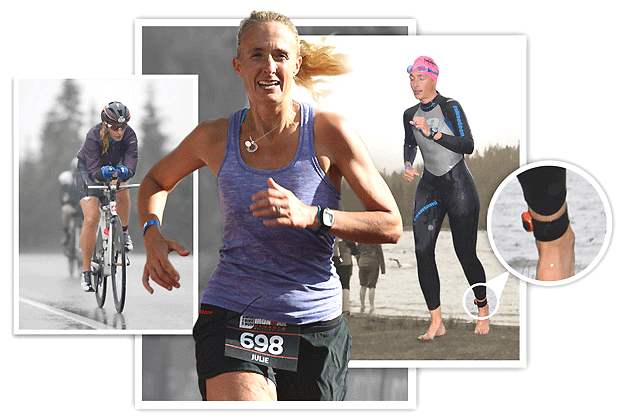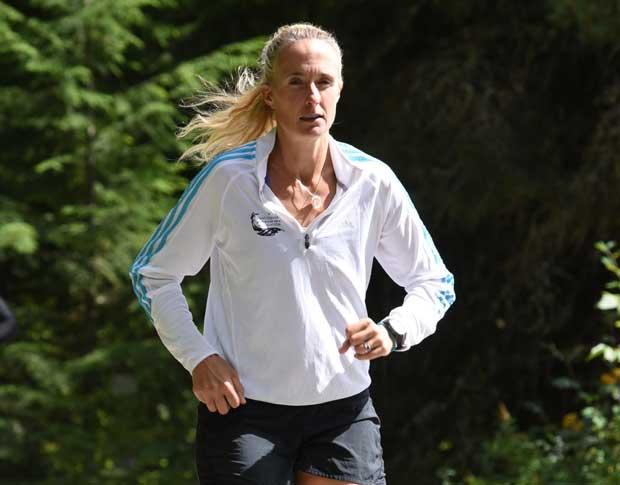Sarah Lyall on Miller Story
Some months ago a reporter from the New York Times left me a message about Julie Miller. This was the last topic I wanted to talk about. I didn't return the first several calls and emails. I'd had enough.
But I did finally talk to Ms. Lyall. While the Julie Miller saga was a hand-wringing (and somewhat pricey) ordeal for me, her story does profoundly touch on two universal themes that transcend a particular sport, or any sport, or any human endeavor: breaking trust with a community that assumes and depends on trust; and the bifurcation of an individual. What makes Ms. Miller so interesting is that she's become a visible proxy for what we all are: not entirely good and healthy, not entirely bad or unhealthy. You and I are a complex of values and skills and faults and dis-ease, and Ms. Miller is an exaggerated and by now quite public example of that matrix.
I told Ms. Lyall in our first discussion my view: the meat this story was not about the mechanics of cheating; rather our reaction to cheating.
Now that the story is, probably, come and gone for the Times (3 stories in the Times to date), I was interested in how the story struck the editors at the Times.
SLOWTWITCH: Did this story grow? Did you originally expect it to be a discrete size and then it hopped the fence and took off on its own? Or was the response to this story always what you had in mind?
SARAH LYALL: When I first started looking into the story, I had no idea it would grow to the size it did, or be as detailed. But it became clear that there was much more to it than I'd suspected. Three things were particularly interesting.
First, the high level of emotion in the triathlon community over Miller's case, particularly the view – a surprise to me – that what she was accused of doing, cutting the course, was even worse than doping.

Second, how Miller's disqualification and suspension came about, after athletes – rather than race officials – took it upon themselves to launch a detailed forensic examination of her performance in Ironman Canada and other races.
Third, Miller's high profile in the Squamish sports community and her continued, unwavering, protestation of her innocence in the face of persuasive evidence that she was not telling the truth.
SLOWTWITCH: You traveled to Squamish, in Western Canada, to meet and interview people in Julie Miller’s town, including knocking on her front door. Did you always contemplate going to Squamish, or did the story morph and that decision was made on the fly?
SARAH LYALL: When I started digging deeper, I realized that I needed to have a detailed understanding of what exactly had happened – the race, the official response, the questions raised by other athletes, the chatter in the triathlon community, the disqualifications and bans – and also as much context as possible about Miller and her community. That required speaking to a great many people, all of whom helped with different pieces of a pretty complicated puzzle. At first, people were very reluctant to be interviewed, especially in Squamish, a small place where everybody in the biking/triathlon world seems to know each other and where emotions over Miller were already very heated. I made the decision to go out there because I knew that if I could get a few people to talk to me, that would open the doors to more potential sources, and some of them might become comfortable enough to speak on the record.
The Times has a policy against using anonymous negative quotes, and it's a sloppy way to write a story in any case, so it was important that people felt confident enough to allow me to use their names.
To make sure my information was accurate, I wanted to cross-check it with as many sources as possible. By that time, I'd communicated with Miller by email and had a couple of phone conversations with her. She'd given me a statement asserting that she had not and never would cheat in any competition, and she'd made it clear that that was all she wanted to say. I knew by then that this was going to be a big piece, and I wanted to prepare her for that and also provide her with every opportunity to explain herself, as a matter of fairness and thoroughness. That's why I knocked on her door.
SLOWTWITCH: Do you read the comments to your articles? How did the comments strike you?
SARAH LYALL: I did. They were fascinating. They fell into a few categories.
First, people wondering why the New York Times felt the story was worth covering – that happens with almost any big feature in the paper, I've learned.
Second, people questioning whether it was fair to give such prominent display to the apparent misdeeds of one amateur athlete from British Columbia. My editors and I had thought hard about this point. We'd concluded that since what she'd apparently done was not a one-off lapse but part of a pattern of behavior that clearly would have required foresight and planning; and since she'd so publicly and aggressively proclaimed her innocence and presented herself as a victim of bullying in a public way; and since the story had already turned into such a big deal in the West Coast triathlon community, we were justified in presenting it the way we did.
The third category of comments, from the overwhelming majority of people, said the story was interesting as a tale. Many commenters said they were horrified at what they saw to be blatant cheating and dishonesty in a sport that, especially at the amateur level, is usually associated with collegiality and sportsmanship.
SLOWTWITCH: Can you scale this story against other stories you’ve written? When you someday run the highlight reel of your stories published by the Times, is this one going to stick out? Or is this just one of many?
SARAH LYALL: I've worked at the paper for many years! I've covered murder trials and terrorist attacks and elections and hurricanes and political scandals and riots – you name it. This was interesting because I was allowed so much time to report and write, and given so much space for the story, thanks to my editor, and because the psychology of these things – how someone could apparently do what Miller did, and continue to proclaim that she did not do it – is so compelling as a question.
Another striking component of it reflects simply the changing nature of journalism in the digital age. The story became a huge thing on social media; it reached hundreds of thousands of readers, many of whom – according to programs we have that can monitor these things – read all the way through, to the end. And it's a long story! So there was a lot of chatter around it that wouldn't have been there, say, 10 years ago; a lot of engagement with readers. People felt really, really strongly about the story. That was new to me.



